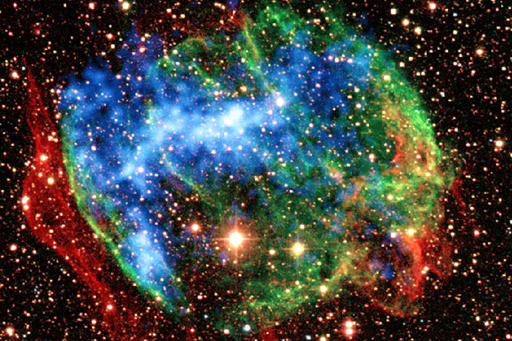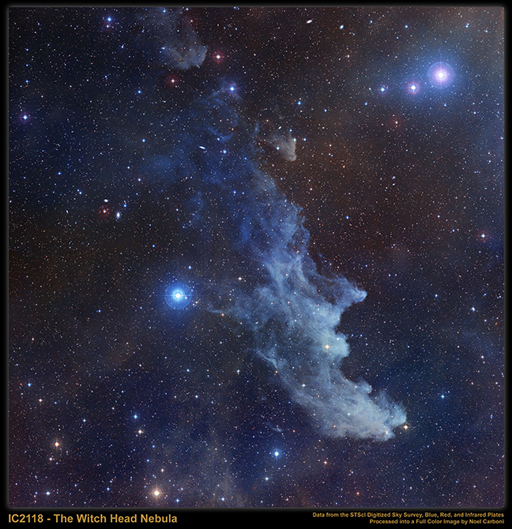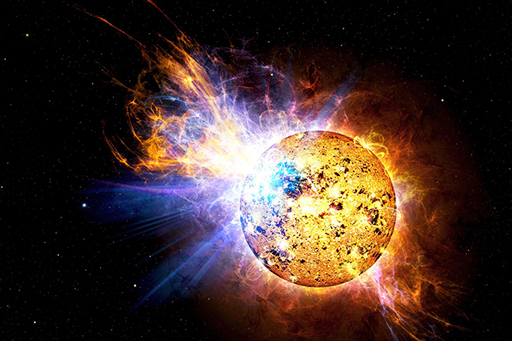4.1.2 Lifetime of a star
It is not sufficient that a planet is in the habitable zone of a star. As you’ve just heard, the star must be the right type of star!
For planets to form (and life to arise), a star must have a reasonably long lifetime during which stable conditions exist. Highly energetic stars that have sudden outbursts of radiation, or extremely rapid spin are not stable. For any of these types of star, the environment (temperature, radiation, etc.) changes too rapidly to allow life to develop.
Stars liable to become supernovae, such as giant stars reaching the end of their lifetimes or rapidly rotating stars like pulsars are also unsuitable – as the environment disappears altogether in the explosive outburst in the case of a supernova.
Massive stars like Rigel, above, have a shorter lifetime than the Sun (10 million years rather than 10 billion years). They are also hotter and emit much more ultraviolet (UV) radiation. A higher UV flux can lead to the destruction of an atmosphere. This means that the UV radiation can reach the planet’s surface. The effect of this radiation would be to destroy any organic molecules (i.e. including anything that might be living). Massive stars are therefore unlikely to be hosts for life-bearing planetary systems.
Stars less massive than the Sun are cooler, emitting less heat. So for a planet to be warm enough for life, it would have to orbit close in to the star, resulting in problems from higher radiation.
Next, find out what makes our Galaxy the right type of galaxy.



